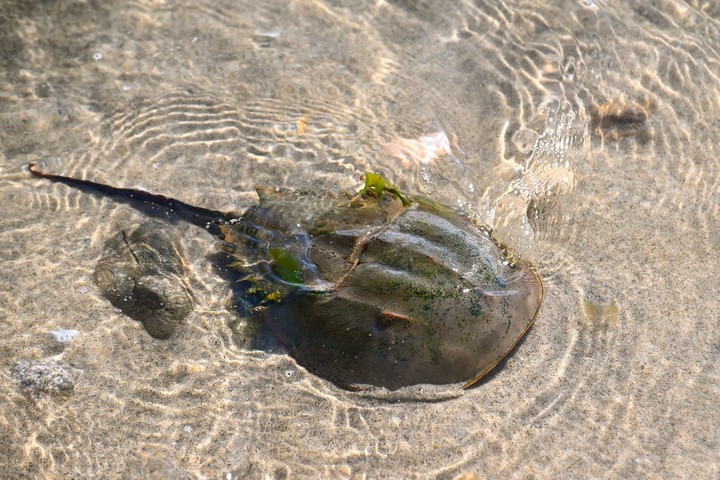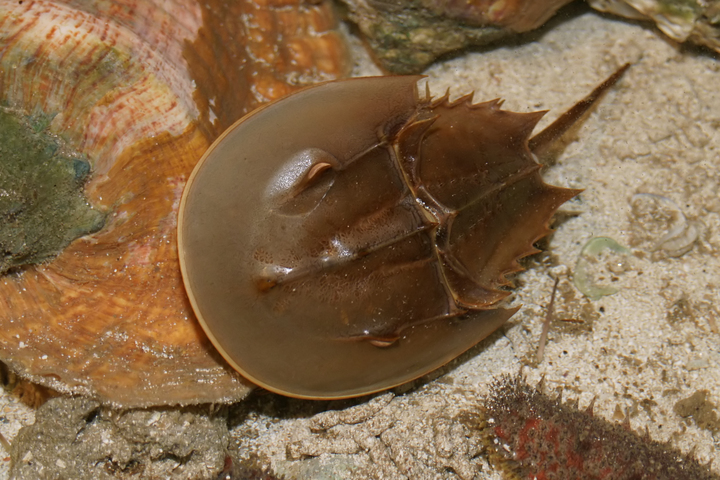Limulus polyphemus


| Latin name | Limulus polyphemus |
|---|---|
| Local name | Atlantic horseshoe crab |
| Family | Limulidae - Limulus |
| Origin | The Mexican Golf |
| Max length | 60 cm (23.6") |
| Minimum volume |
500 l (132 gal) |
|---|---|
| Hardiness |
Unknown |
| Suitable for aquarium |
Suitable for special aquariums |
| Reef safe |
Not reef safe |
| Aggressiveness | Unknown |
| Recommended |
Small crustaceans (Krill, mysis, artemia...) |
|---|
Horseshoe crabs are not Crustaceans. They are actually closer related to spiders and scorpions than crabs.
I have placed them under Crustacean because many people think of them as crabs.
Horseshoe crabs requires a large aquarium with a deep sandbed.
In most aquariums they will starve. Live rock formations may damage horseshoe crabs.

